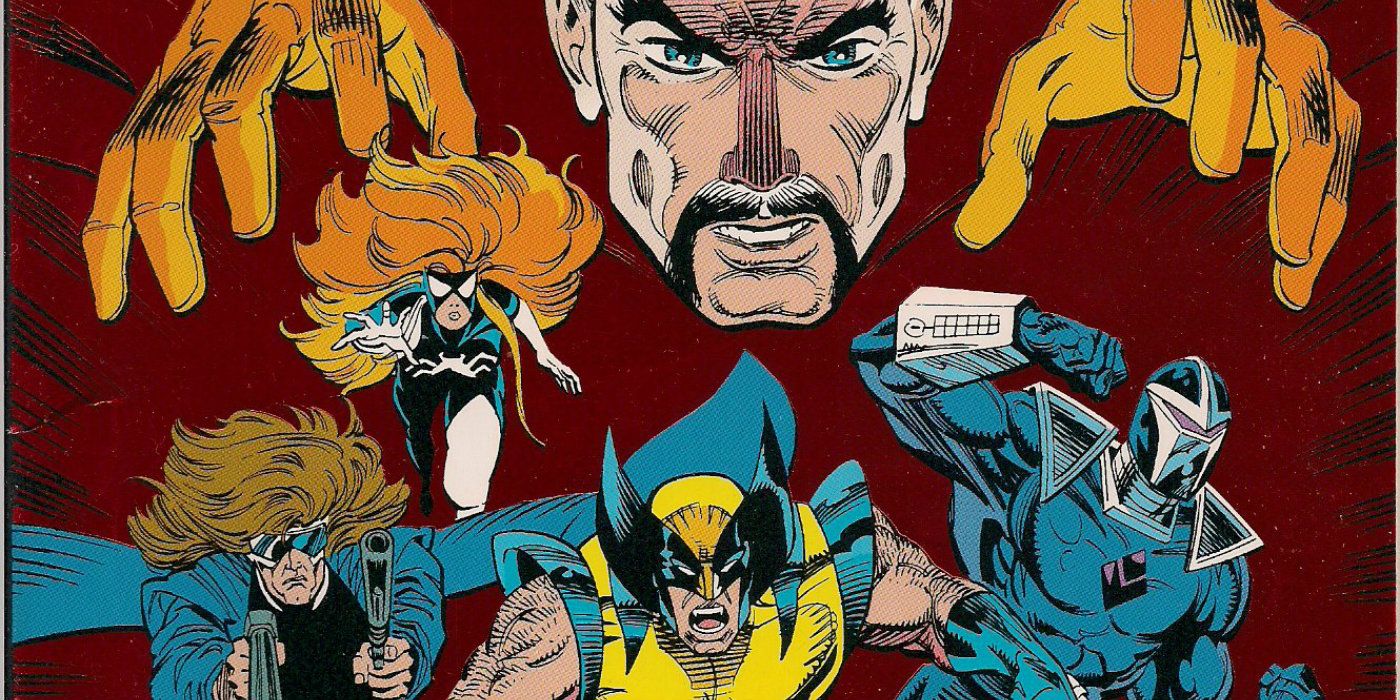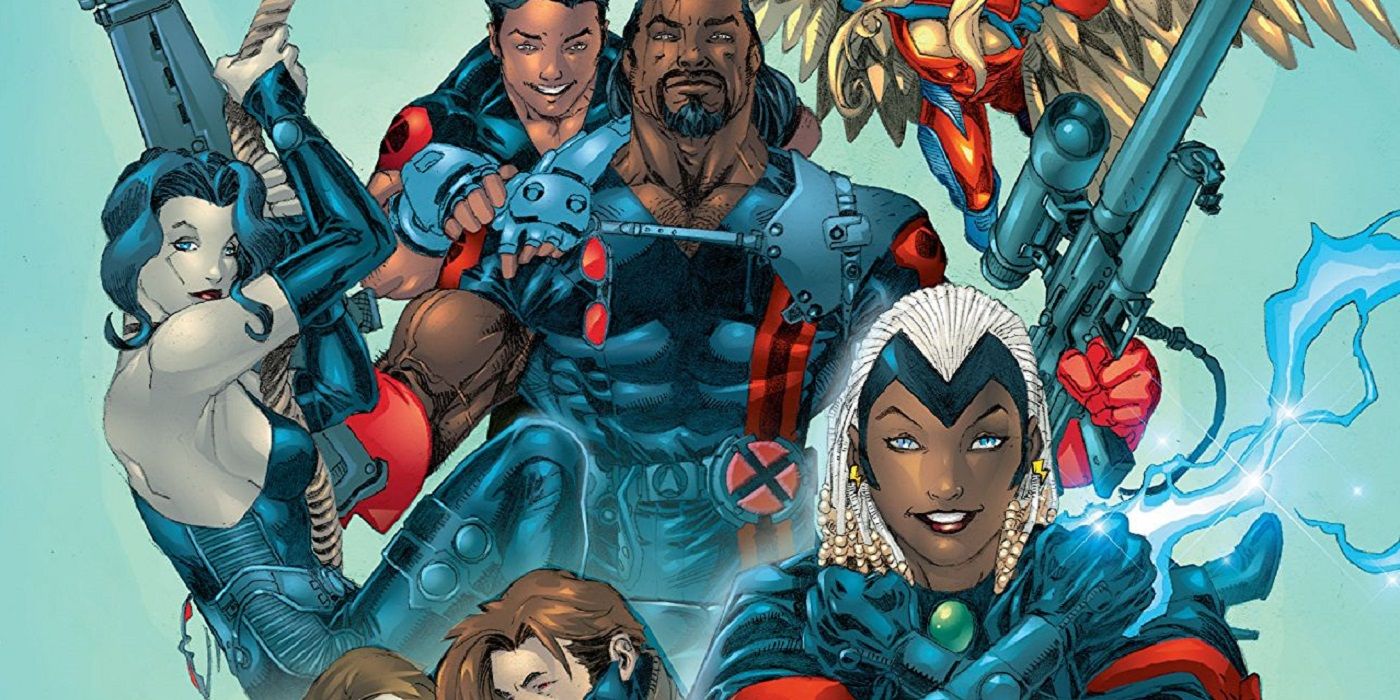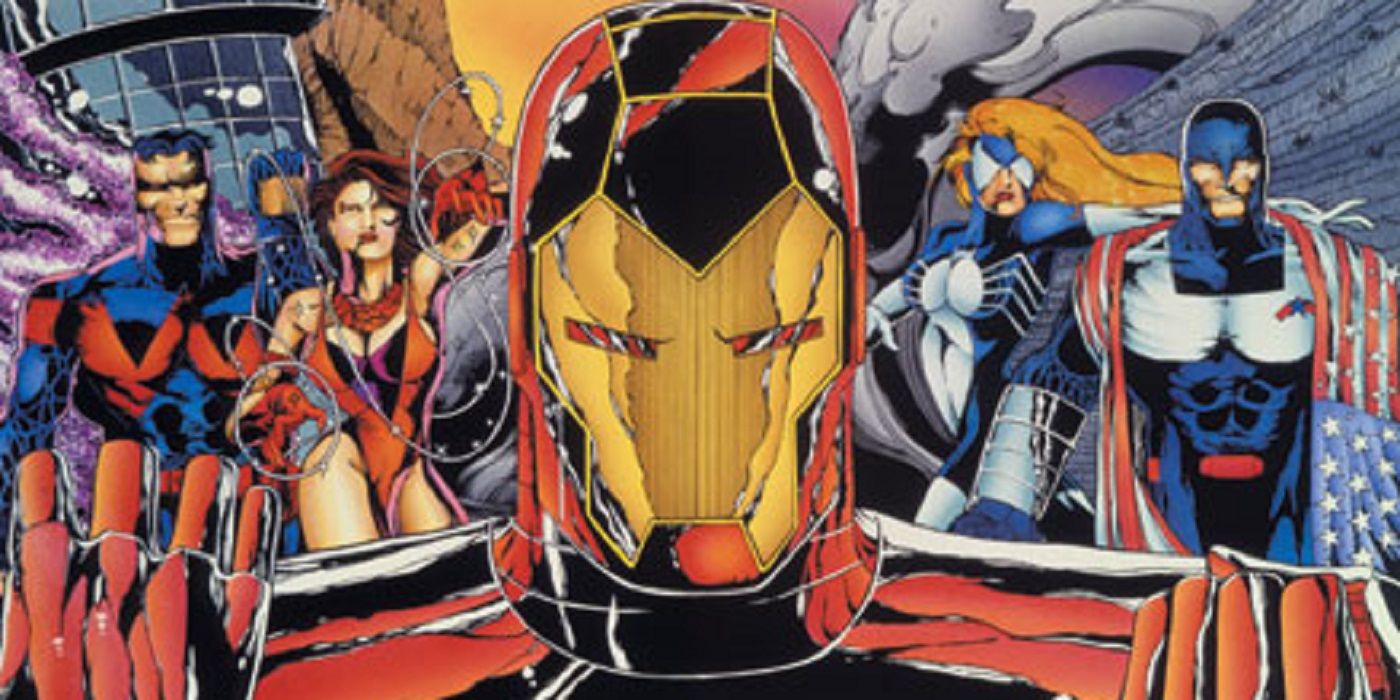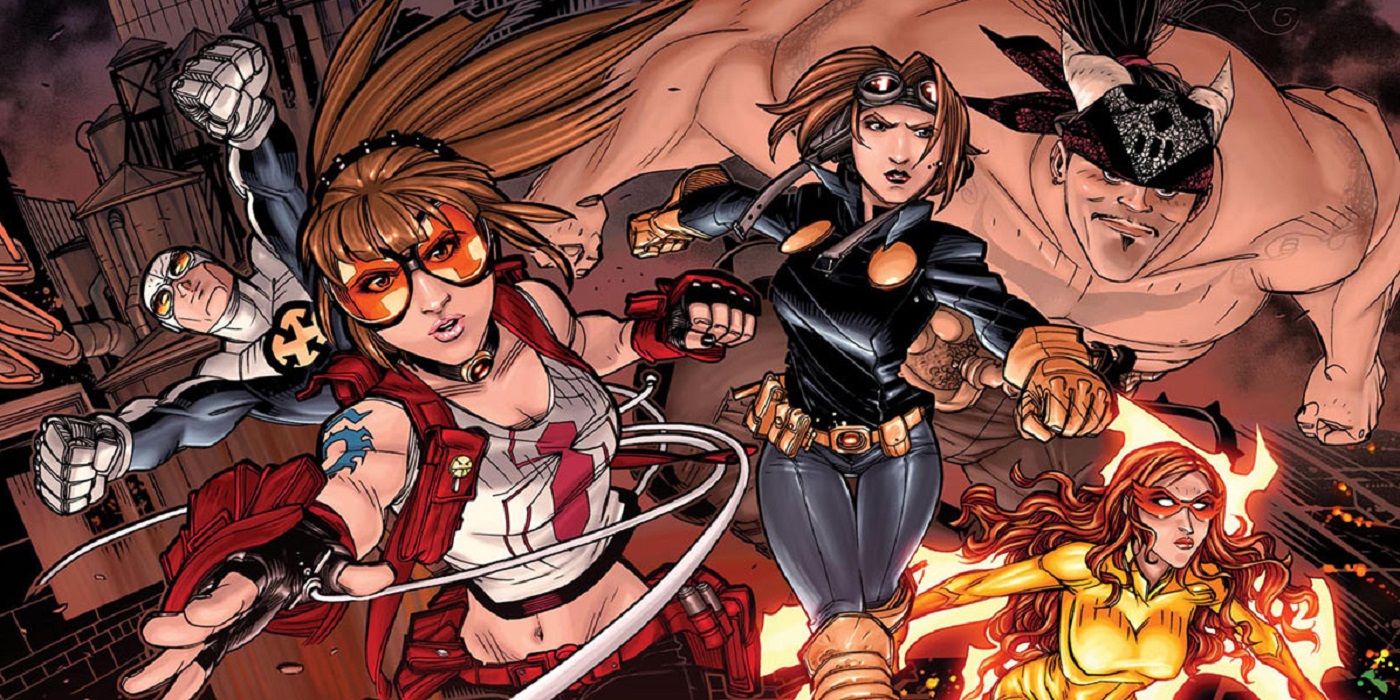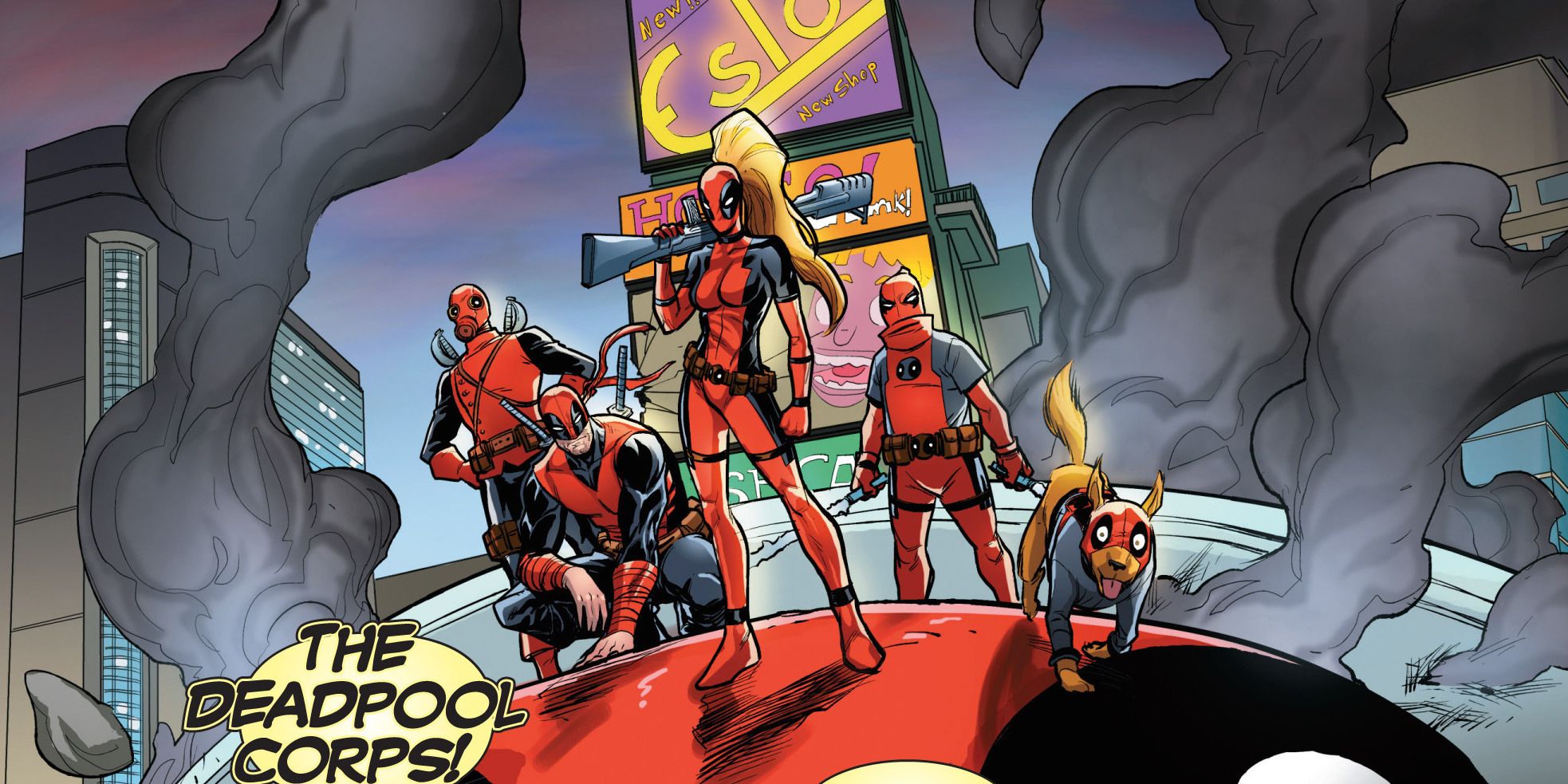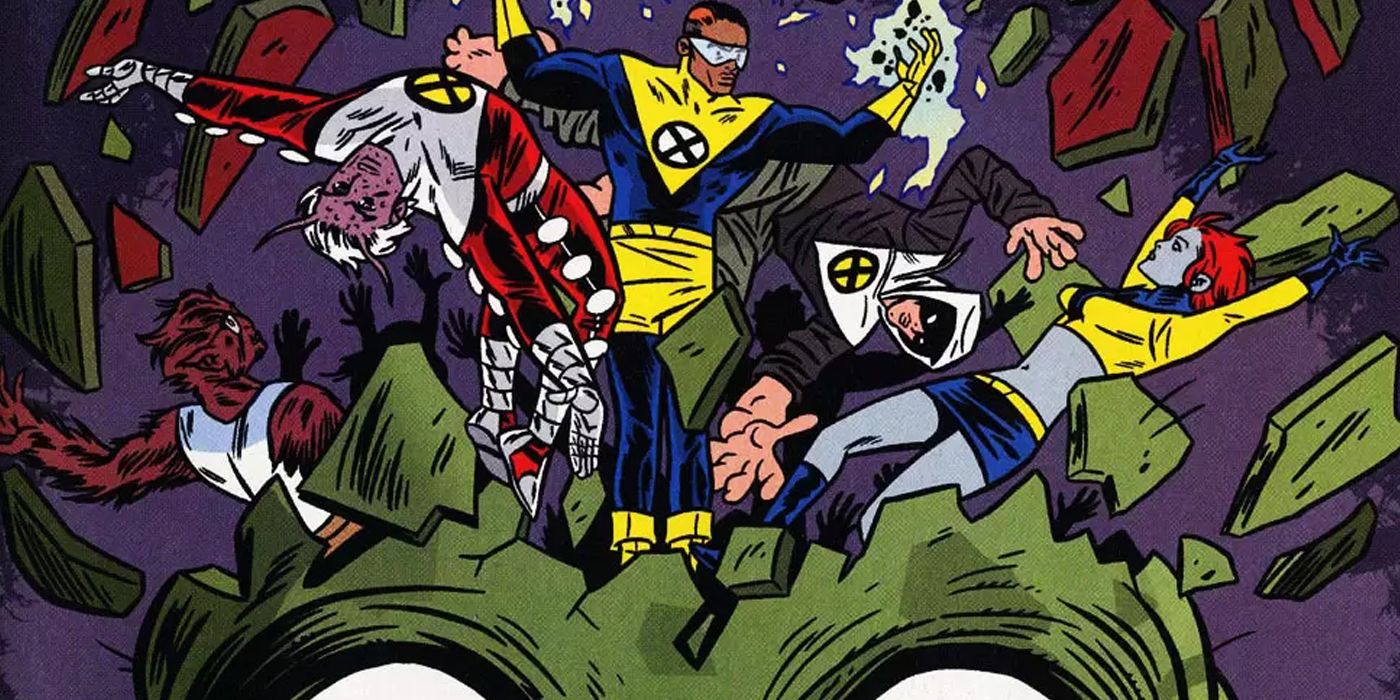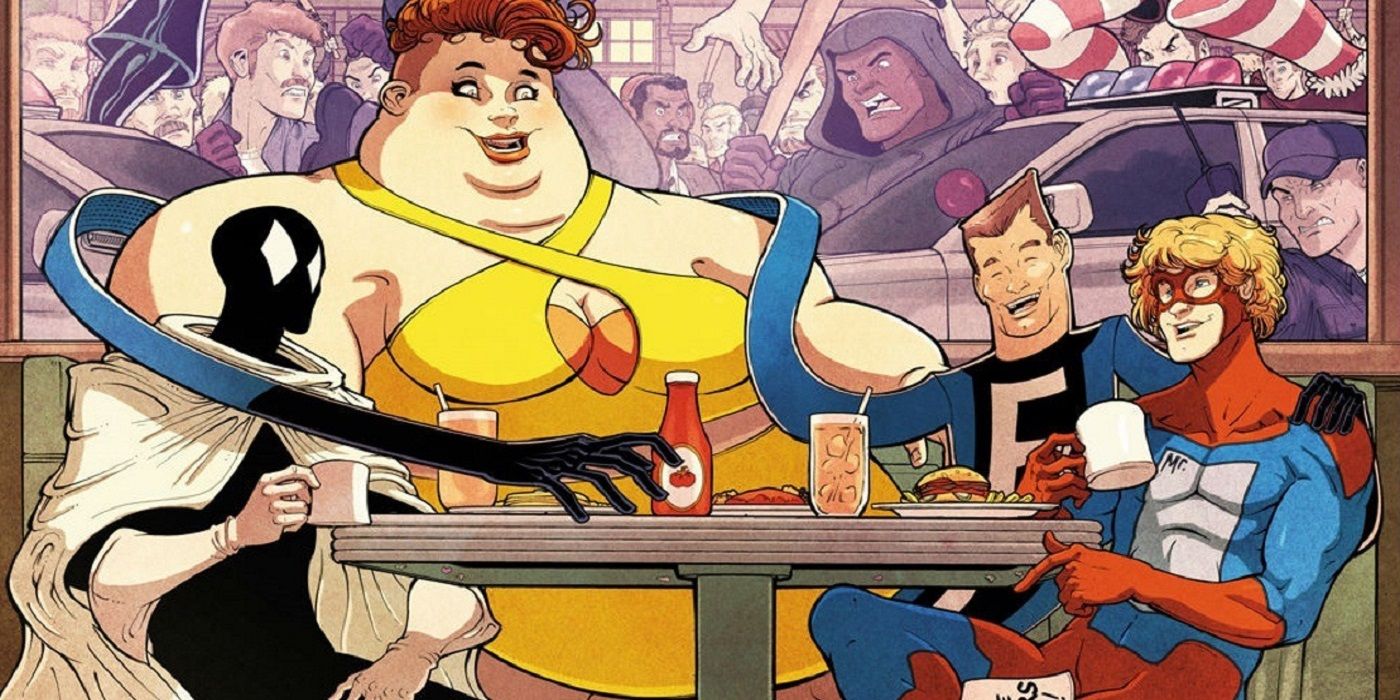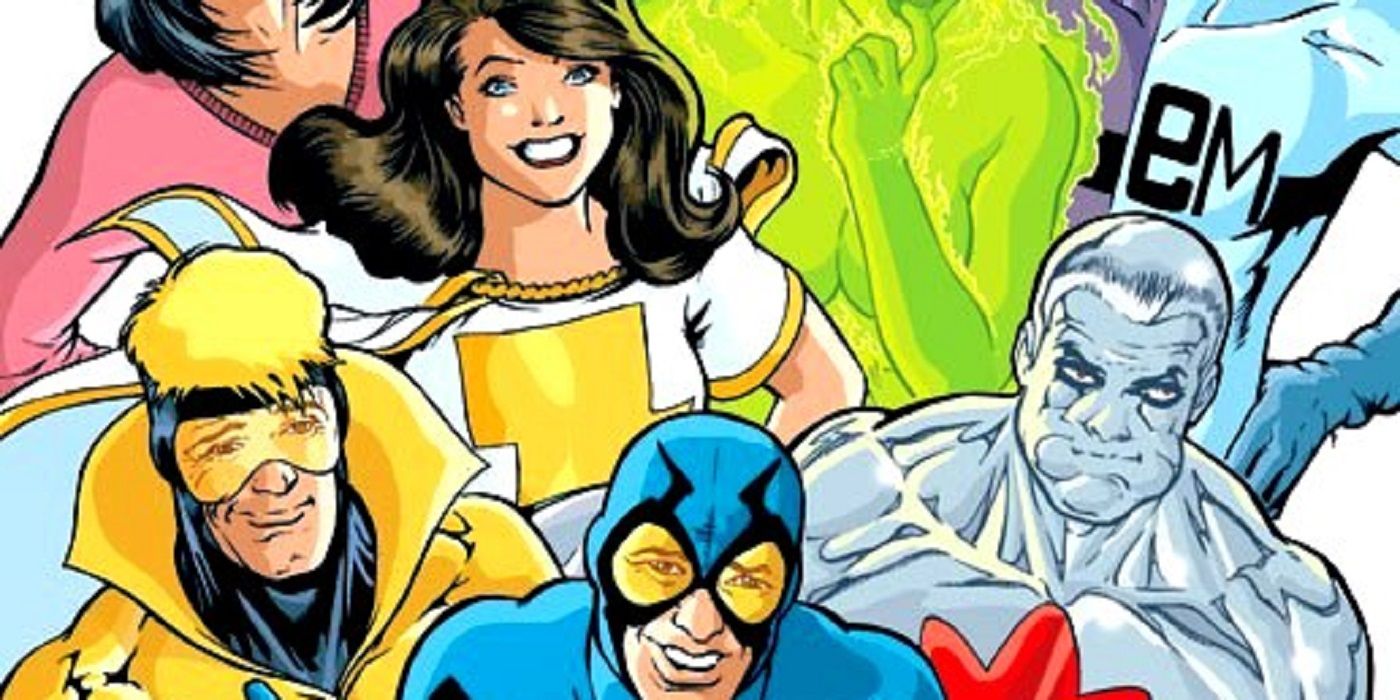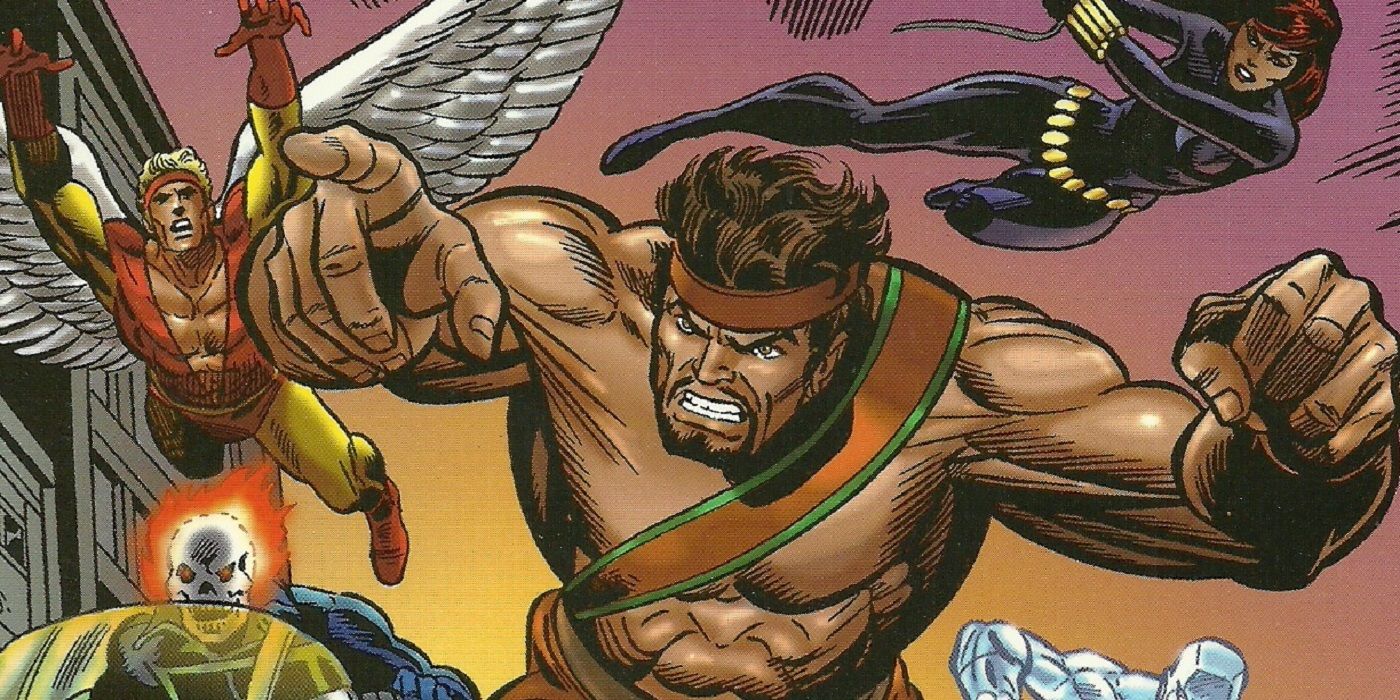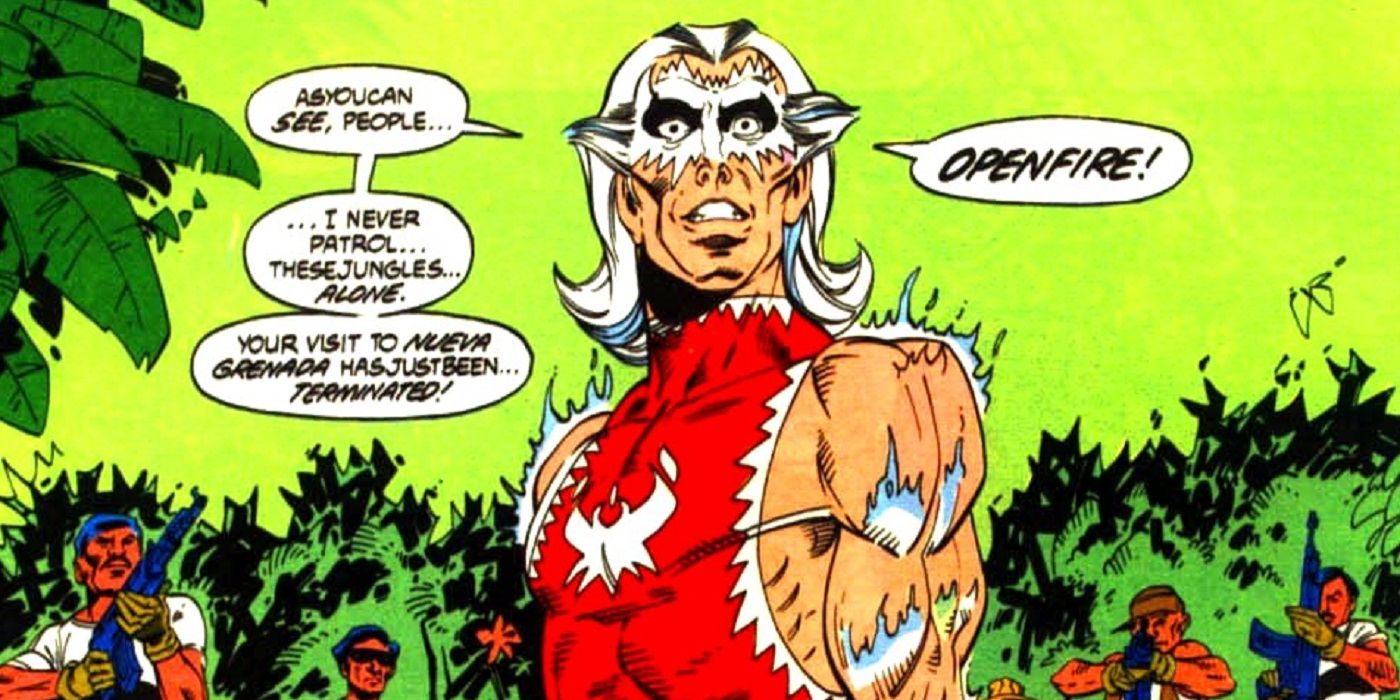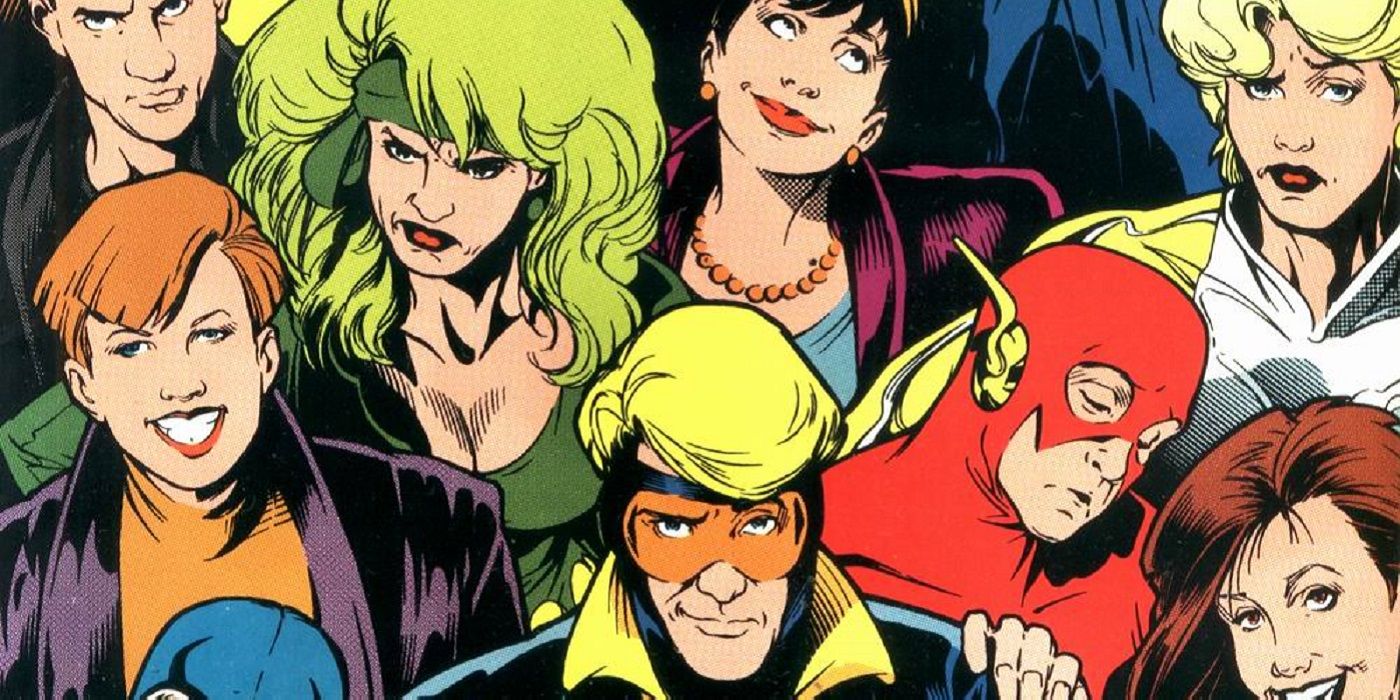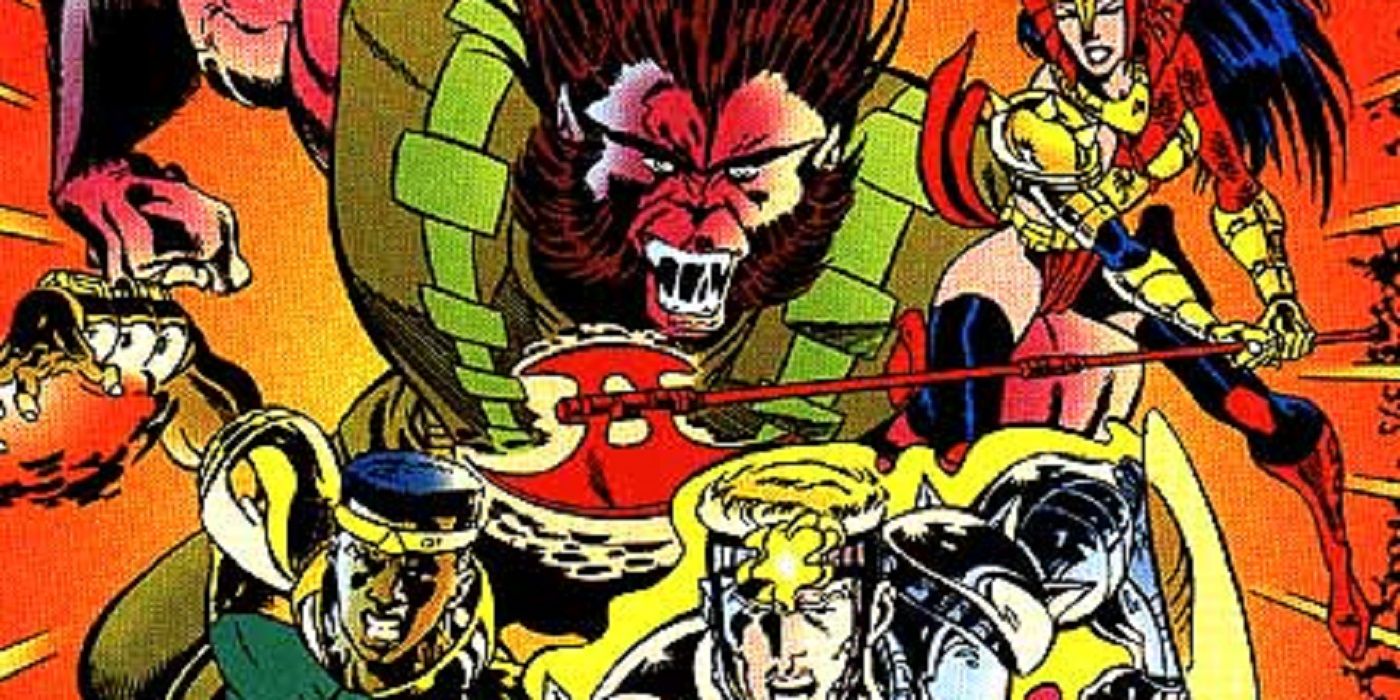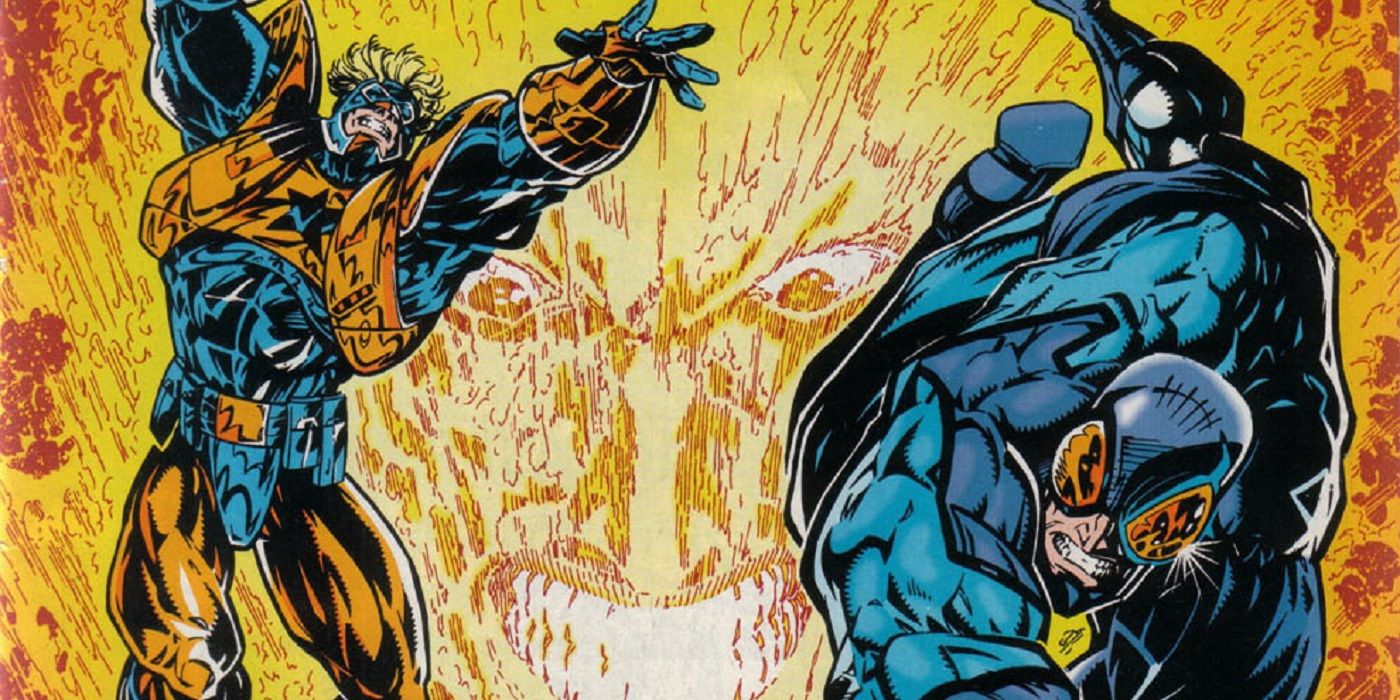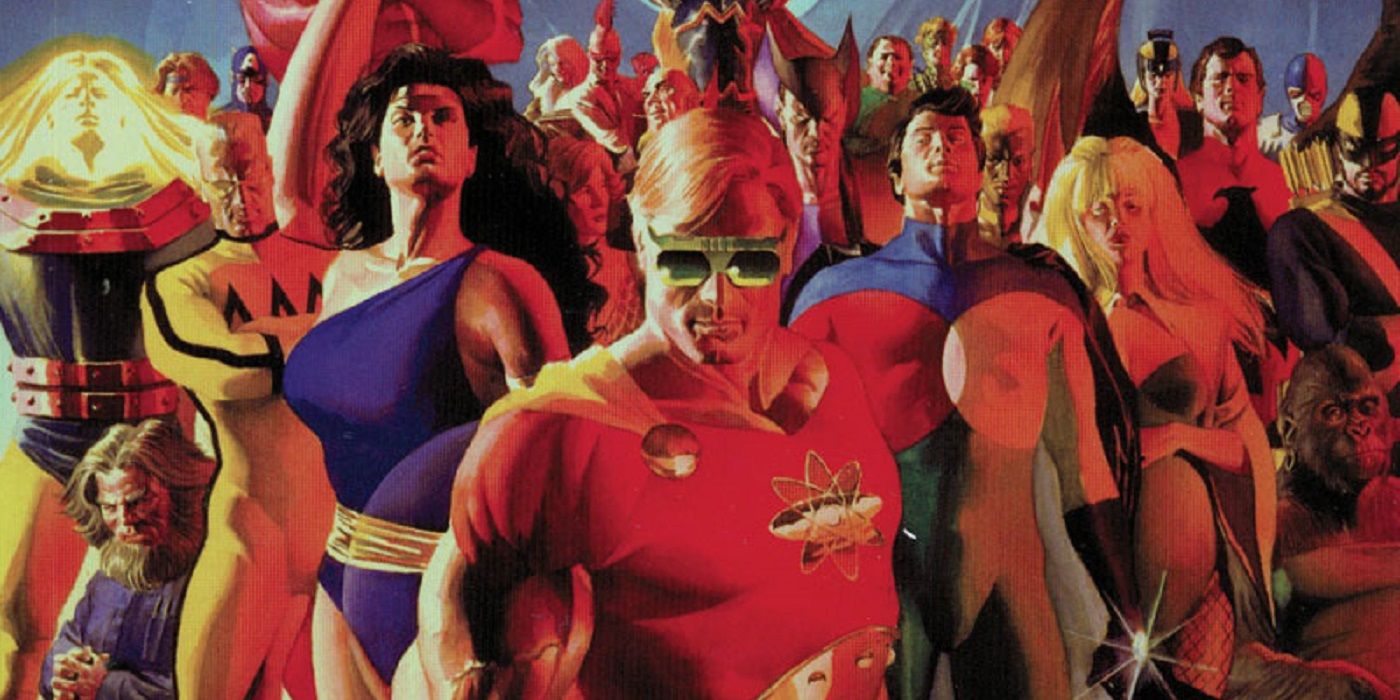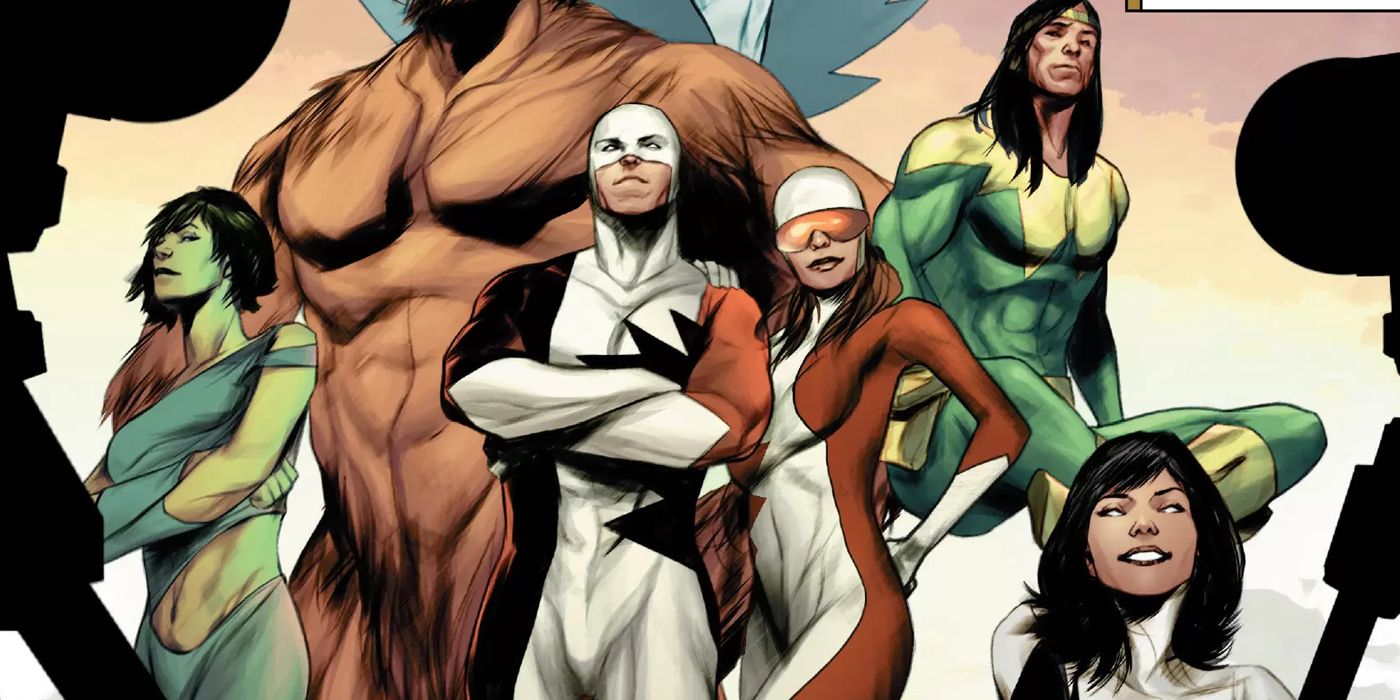In the world of superhero comics, membership of a team is often a sure sign that you've made it, that you've succeeded as a hero and been accepted by your peers. For a long time, both the JLA for DC and the Avengers for Marvel were exclusive clubs, ones where prospective members were headhunted and only the best would do. This notion may have diminished somewhat in recent years, with Avengers membership seemingly given out to all and sundry, but the fact remains that super teams are powerful and respected institutions. Let's face it, when an alien armada comes to devour the Earth, which would you rather have? The combined force of the Justice League, or a novice hero still learning about their powers?
RELATED: Justice League: The 15 WORST Members EVER
And yet, for every team such as the X-Men, Avengers or JLA that have achieved great success, there are other teams that just can't measure up. Good intentions will only get you so far when you have an underwhelming roster of members or fail to achieve any successes of note. In comics, as in life, there are winners and losers, and the following teams definitely drew the short straw when it came to superhero success.
15 X-TREME X-MEN
This team wasn't quite the '90s stereotype that its horrid name suggests. The title debuted in 2001, from the creative team of Chris Claremont and Salvador Larroca, and featured a team of X-Men on the hunt for the diaries that recorded Destiny's premonitions of the future. A somewhat intriguing premise, the problem was that, with the core X-Books receiving priority, Claremont was left with the third-choice characters. His team included Storm, Bishop, Sage, Thunderbird III, Rogue, Beast and Psylocke. By the end of the first arc even this roster had reduced, with Psylocke killed off and Beast reclaimed by Grant Morrison.
With the initial premise of the book soon abandoned, it quickly became akin to a Chris Claremont greatest hits. An alien warlord tried to make Storm his queen, Kitty Pryde returned, and in the end the team members returned to the X-Men, neither them or the readers being quite sure what their long absence had actually achieved.
14 FORCE WORKS
From the ashes of the West Coast Avengers, a new team was born. Bigger (erm, not really), better (debatable), badder (getting warmer), the team was intended to be more proactive than the Avengers, preempting disasters and quickly neutralizing threats. With their line-up including long-time Avengers such as Iron Man, Scarlet Witch, U.S. Agent and Wonder Man, the signs seemed promising. Unfortunately, Wonder Man was blown to smithereens in the title's first issue, rather setting the tone for the team's brief and underwhelming performance.
While Dan Abnett and Andy Lanning penned the entire 22 issue run, continuing from West Coast Avengers, their cause wasn't helped by the title having 10 pencillers during its brief run. Add in the fact that the book was affected by 'The Crossing," as well as its rather inconvenient reveal that Tony Stark was a Kang-influenced killer, and it's not hard to see why it was wound up in less than two years.
13 YOUNG ALLIES
For some teams the stars seem to align, with almost instant success coming their way. The Avengers' first mission saw them defeat Loki, which is a pretty good way of establishing super team credentials. Other teams, such as The New Warriors, started slow and built their legacy over time. Unfortunately, the brief 6-issue run of Young Allies, by Sean McKeever and David Baldeon, didn't allow the teen heroes much time to forge a reputation or a legacy. Instead, they were still exploring the boundaries of their new friendships, and dealing with the fallout -- both physical and emotional -- of their failure to stop a nuclear explosion in their first appearance.
It's hard to say what would have been the fate of the Young Allies if low sales hadn't meant an early cancellation. Unfortunately, as the intervening years have seen the death of Bucky, the team's story was cut short before it truly began.
12 DEADPOOL CORPS
Now a beloved movie star, Deadpool has come a long way from the low selling but critically acclaimed run by Joe Kelly in the late '90s. While the movie helped to cement his popularity with the general public, his renaissance in the comics started some years earlier. This led to Marvel -- never a company to resist milking a good thing until it's dry -- publishing a huge array of Deadpool products. For those skeptical commentators who believed that Marvel was stretching Deadpool too thin, the company had the perfect response. Why settle for one Deadpool when you can have a whole team of them?
This was the premise of Deadpool Corps, by Victor Gischler and Rob Liefeld, where a team of alternate Deadpools gathered together to kick butt and save the universe. Featuring Deadpool (of course), Headpool, Lady Deadpool, Kid Pool and Dogpool, the joke had worn thin long before the series concluded with #12.
11 X-STATIX
Let's get one thing straight: X-Statix was a bright spot of the X-Men line during its run between 2002 and 2004. The off-beat writing of Peter Milligan and the unmistakable art of Mike Allred showcased a team of mutants that were celebrities first and superheroes second. For them, beating bad guys was a secondary consideration behind courting the media and cultivating their image. However, while this dysfunctional approach may have been interesting to read about, it made the team itself a bit of a joke.
The old saying about there being "No I in team"? Well, it's pretty obvious that the members of X-Statix didn't subscribe to that notion. The members were better at showbiz than self-preservation, with the body count of dead team members rivalling that of the Suicide Squad. In #26, the entire team was killed off, their 15 minutes of fame obviously having expired.
10 GLA
Everyone's favorite super team from Milwaukee, the Great Lakes Avengers are a lovely bunch. They're keen to help others and desperate to be taken seriously as superheroes. The only tiny drawback is that they're utterly incompetent. Whether it's destroying an aquarium while fighting Deadpool or failing miserably in their mission to apprehend the Thunderbolts, the ambition of the team far exceeds their meager talent.
Created by John Byrne in West Coast Avengers #46, the team was initially trained by Hawkeye, who quickly found that they weren't up to traditional Avengers standard. Mr Immortal, Doorman, Big Bertha and Flat Man have stuck together ever since, with members such as Grasshopper, Squirrel Girl and Gravity passing through their ranks along the way. Membership for Forbush Man surely can't be far away.
9 SUPER BUDDIES
Years after their legendary run on Justice League International, Keith Giffen, J.M. DeMatteis and Kevin Maguire reunited to chronicle the further adventures of many of their most beloved characters. Blue Beetle, Booster Gold, Elongated Man, Captain Atom and Fire, along with some new faces, joined forces as the Super Buddies. This group was designed to be accessible to the common man, based in a normal neighborhood and dealing with low-level threats instead of cosmic drama.
The team failed to endear themselves to their new neighbors, primarily due to the fact that members were regularly portrayed as intellectually challenged. In particular, Booster Gold appeared to have lost multiple brain cells since his original JLI stint, his contributions to the team including almost starting a war with an invading alien force and condemning his teammates to hell.
8 THE CHAMPIONS
First appearing in 1975, The Champions are notorious for a membership that appears to have been decided by a roll of a dice. How else do you explain the fact that Iceman and Angel teamed up with Black Widow, Hercules and Ghost Rider? Iceman and Angel had been X-Men teammates and Hercules and Black Widow had served on the Avengers. But all together? On the same team? Um, yeah, okay... Compared to other Marvel teams of the time, such as The Defenders and The Avengers, the members of The Champions just weren't in the same league.
This might explain why the book had such a short (by '70s Marvel standards) run, only lasting 17 issues before being cancelled. But, terrible though the team may have been, there was one bright spot that makes their existence worthwhile. In #14, readers were introduced to the wonder that is Swarm, a Nazi scientist made out of bees.
7 THE NEW GUARDIANS
DC's Millenium event from 1988 concerned the Chosen, a group of humans chosen by a Guardian of the Universe to act as representatives of the human race. At the conclusion of the series, the remaining Chosen were granted their own series, The New Guardians, by Steve Englehart and Joe Staton. DC gained kudos from some quarters for featuring a team composed of different nationalities that addressed social issues of the day such as HIV, but on the whole the team failed to excite readers. More noteworthy were some of the outlandish plot elements featured.
While the intent of showcasing a superhero with HIV was laudable, the means that Jet was infected -- by a tainted vampire bite -- was groan-worthy. Worse (or better, depending on your liking for bad comics) was the character of Snowflame, a drugs kingpin who gained his powers from cocaine. Truly the '80s were a different time.
6 CONGLOMERATE
Created by Keith Giffen, J.M. DeMatteis and Chris Sprouse, the Conglomerate spun out of the Giffen-DeMatteis run on JLI, with Booster Gold quitting the League for a spot on this corporate-sponsored team. Booster's great, but let's be honest... if he's the big name hero on your team, it doesn't say much for the other characters. The Conglomerate featured a bizarre mix of forgotten heroes, new characters and also-rans, including Gypsy, Maxi Man and Reverb.
The idea of a corporate sponsored super team is an interesting one, and Booster Gold was a good fit given his origins as a fame-hungry adventurer. However, the premise wasn't helped by the fact that the team was just so boring! With the characters in the JLI being so larger than life, it's perhaps not surprising that the Conglomerate couldn't compete, but reading about these characters was a real chore.
5 FANTASTIC FORCE
Readers of Marvel's Fantastic Foursome in 1995 could thrill to the adventures of their favorite heroes: Psi-Lord, Huntara, Vibraxas and Devlor. Oh, who are we kidding, these four weren't anyone's favorite heroes. An artificially aged Franklin Richards? His aunt from an alternate future? An ape-like Inhuman? A young Wakandan? It's not surprising that fans of The Fantastic Four didn't rush to pick up this spin-off, with it only lasting for 18 issues, from 1994-1996.
Written by Tom Breevort and Mike Kanterovich, and penciled by Dante Bastianoni, the title didn't exactly set the world alight, even with guest appearances from the Black Panther, Human Torch and She Hulk. Their status as the poor man's Fantastic Four was confirmed by the fact that while The Fantastic Four stayed in the ultra-modern Four Freedoms Plaza, Fantastic Force stayed in a converted loft.
4 EXTREME JUSTICE
Grimacing! Angst! Spittle! Oversized physiques! Contorted poses! While that list could easily cover every Image comic released between 1992 and 1995, our subject in this entry is Extreme Justice, DC's attempt to take the JLI to the extreme! Captain Atom, Blue Beetle and Booster Gold remained on the team from the JLI days, joined by Maxima and Amazing Man. The team was intended to be more proactive and hard-edged, leading -- yet again -- to an invasion of the country of Bialya.
The initial creators on the title were Dan Vado and Marc Campos, after whom the book subsequently went through numerous fill-ins before settling into the creative team of Robert Washington and Tom Morgan. This title marks Booster Gold's third appearance on this list, making it pretty clear that teams wanting to be a success should stay well away from him.
3 SECRET DEFENDERS
History has not been kind to Secret Defenders, a title that ran for 25 issues, between 1993 and 1995. The setup was that Doctor Strange would organize teams of heroes best suited to carrying out various missions. Invariably, many "hot" characters of the time were spotlighted, leading to a succession of line-ups that appeared to be plucked at random from The Official Handbook of the Marvel Universe. By the latter part of the title's run, even this appeared to be too much effort, with #23 featuring a team plucked solely from the "D" section: Doctor Druid, Drax, Dagger and Deathlok.
The awfulness of Secret Defenders is encapsulated by the fact that when Doctor Strange left the group after #15, Doctor Druid took over as the team's leader. Note to Marvel: Doctor Druid is not the solution to any problem. Ever.
2 SQUADRON SUPREME
The Squadron Supreme maxiseries by Mark Grunewald is something of an overlooked classic, one of the first comics to take a serious look at what would happen if heroes expanded their efforts and energies beyond fighting bad guys. In the case of the Squadron, things didn't go well, due to the suspicion of world leaders and the simple fact that the Squadron were, at times, their own worst enemies.
Outside of this miniserie,s the classic Squadron have mainly appeared in Avengers titles. Despite their status as Marvel's premiere JLA analogues, their appearances invariably leave them looking like second-rate fools. More often than not, the reason is mind control. Whether it's The Overmind, the Serpent Crown or The Controller, if the day has a "y" in it, it's a safe bet that somewhere, somehow, a member of the Squadron Supreme is being mind controlled.
1 ALPHA FLIGHT
Alpha Flight first premiered in Uncanny X-Men in 1979, before gaining their own series from writer/artist John Byrne in 1983. This series ran until 1994, with several relaunches thereafter, but how much do people really know about Alpha Flight? Everyone knows that they're Canadian and some may recall Northstar's declaration of his sexuality. More may recall the way that the team were casually butchered by Brian Bendis in New Avengers #16. For a team that's appeared in over 150 issues of their title across various volumes, it's a poor legacy.
So, what exactly makes Alpha Flight such a missed opportunity? The title launched in a blaze of publicity with a hot creator and a mutant connection, only to spend the next decade on a slow decline into obscurity. It seems that with the X-Men connection being tenuous at best, readers simply didn't care enough about the characters to appreciate them on their own merits.
There you have our pick for Marvel and DC's most terrible teams. Agree? Disagree? As always, we'd love to hear your thoughts and suggestions, either in the comments thread or on Facebook!

